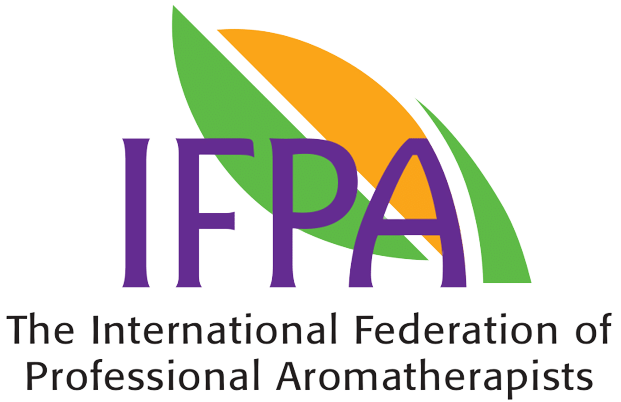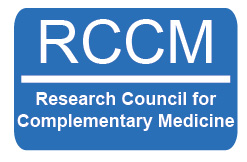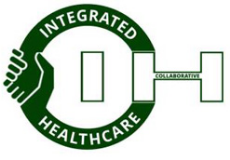Research & resources
Guide to working with clients who have cancer
Index to the Guide to working with clients who have cancer:
1. Introduction
Aromatherapy is becoming more widely used by people who have a diagnosis of cancer. Many individuals may already use some form of aromatherapy or massage to support their well-being prior to having cancer. Some individuals seek out the use of essential oils and massage during cancer treatment to help with side effects of medical treatment, for general relaxation, to pamper and to help cope during the cancer journey. There is now a high curative rate for some common cancers, whilst in some instances cancers can reoccur or progress to incurable disease. At all stages aromatherapy can support the person and work alongside medical and self care interventions.
Most aromatherapists have very limited or no contact with people who have cancer on a regular basis and will have had a very basic introduction to caring for those clients with cancer during their training. Those aromatherapists who have health care background will have more understanding and a good level of competence in using aromatherapy treatments for people with cancer. Some aromatherapists may also work closely with cancer teams within the NHS, in cancer support centres, hospices, day centres and self help centres. The IFPA wish to support all therapists in their professional practice and recognise the differing breadth and depth of a therapist’s experience with cancer patients and their families.
2. Aims of the Guidelines
2.1 The following guidelines are intended for those aromatherapists who have little knowledge or contact on a regular basis with people with cancer, but who wish to gain a better understanding of how to offer support to those clients who may seek them out. The guidelines may be helpful to aromatherapists wishing to work more with people with cancer. However, they are not intended to be definitive or exclusive, and are to be used as guidance only, and not instead of continuing professional development.
2.2 The guidelines are revised from the previous ISPA guidelines.
2.3 The guidelines set out a numbers of issues to be considered when treating people with cancer and this information is intended to facilitate safety in practice.
3. Definitions
There are many definitions of cancer available, and the following definition may be helpful.
3.1 Cancer “ a class of diseases characterized by uncontrolled cell division and the ability of these cells to invade other tissues, either by direct growth into adjacent tissue (invasion) or by migrating of cells to distant sites (metastasis) (Hirsch et al 2002)
3.2 Principles of Care; Aromatherapy can be said to be an ‘art and a science’. A fundamental principle is that it is holistic, considering the mind, body and spirit. It values the whole person, human contact, what is important in a person’s life, a therapeutic relationship, the power of a scent and sense of helping. (Leach 2009)
4. The Nature of Cancer
Clients presenting with a cancer diagnosis may be refused treatment by therapists because of various reasons and misconceptions:
- Training –“that’s what I was taught”
- Fear that massage spreads cancer
- Fear of litigation
- Lack of knowledge
Cancer spreads locally via the lymphatic system and to remote sites via the blood stream. Lymph flows as a result of skeletal muscles contracting, which compresses lymph vessels and forces the movement of lymph. This occurs during daily living activity, and massage does not further increase its flow (MacDonald 1999).
There is no evidence that demonstrates that massage increases the spread of cancer cells, so it is not deemed to be contraindicated (McNamara et al, 1999).
As long as certain precautions and considerations are taken with each individual, any presenting client can be offered something, as there are many ways of using aromatherapy even without massage e.g. compresses inhalations, baths, and creams.
5. Cancer Treatments
Different stages of the “cancer journey”:
Clients with a diagnosis of cancer may approach an aromatherapist for treatment at any stage of their illness, and this will influence the type of treatment the therapist can offer.
They may:
- be recently diagnosed
- have had a diagnosis of cancer in the past but have been given the “all clear’ by their consultant.
- be currently undergoing active treatment for their cancer, where the aim is curative.
- have recently completed all treatments which have hopefully been “curative”.
- have finished treatments to help with symptoms but still have active disease.
- be in the advanced stages of their illness and are being treated with symptom control measures only.
Each individual will present with different physical, emotional, psychological and spiritual problems and needs, and their own unique ways of coping with all aspects of their disease.
The physical problems and symptoms they present with may relate to the tumour itself and its effect on surrounding areas, or to the side effects of treatments they are having.
Psychological, emotional & spiritual aspects may include shock, “why me”, denial, anger, depression, disbelief, guilt, feelings of being punished, uncertainty about their future, loss of control over life, loss of role and status in family, body image problems to name but a few.
Treatments
Clients may be about to have or are currently having include:
- Surgery – some of which can cause body image problems e.g. breast surgery, head and neck cancer, bowel surgery/ stomas.
- Chemotherapy – strong drugs given to kill, slow or stop the growth of the cancer cells. These may be given intravenously or in tablet form. Side effects may include general malaise, mouth ulcers, hair loss, intense fatigue, nausea & vomiting, skin reactions, neuropathy in hands and feet, mood alterations and blood abnormalities, such as reduced platelets or white cells, altered taste, alterations in body weight.
- Radiotherapy – given to shrink tumours, kill cancer cells or stop them dividing and growing. It is usually given externally direct to the tumour site or areas of spread. It may be given prior to or after other medical treatments, or as a single treatment.
- Side effects may include nausea & vomiting, diarrhoea, and skin damage causing the appearance and symptoms of mild to severe sunburn.
- Hormonal treatments – side effects such as hot flushes, weight gain, musculoskeletal aches and pains
Many people with cancer will also be taking a variety of prescribed medications, all of which may have side-effects, so this needs taking into account, as they may already have to metabolise chemotherapy agents as well as strong medication, such as morphine based drugs. If however, an individual was diagnosed with cancer in the past and has had no known recurrence, he/she may be treated with fewer concerns,
6. Referrals
6.1 There are a number of ways clients may be referred for aromatherapy. This does depend on the sources of information about aromatherapy, which is available.
Referrals may be:
- Self referral
- Via family and friends
- Health professionals, including GPs, specialist cancer staff.
- Cancer support groups
Various sources of information available to the public will impact on accessibility to aromatherapy also e.g. Internet, Journals, health clinics, cancer treatment centres, past use of aromatherapy, use of ‘natural’ products, patient information leaflets/books.
6.2 Independent Therapists.
It is useful to have some criteria for offering treatment to clients with cancer and communication is important.
Areas to consider might include:
- Does the specialist health professional know that the client is seeking aromatherapy? If not, the client should be encouraged to tell them or give you permission to tell them .This is important if they are having active cancer treatments.
- Explain about the use and possible benefits of essential oils and massage, and that these are not a cure or medical treatment.
- Offer short treatment sessions over specific number of visits.
- Liaise with health professional if worried.
- Choose certain oils that are considered to be safe.
6.3 Therapists who are working in an organisation e.g. NHS
Aromatherapy services may be offered by hospitals, hospices, nursing homes, independent charity, and cancer support and treatment units or as nursing support service.
Criteria may include
- Working within policy guidelines
- Working with audit processes
- Having written standards by the organisation
- Specific documentation
- Choice of few oils only.
- Written referral forms, appointment system and set number of visits.
6.4 Work environments
Working on organisational premises whether independently or as employed staff, there is a requirement for safety of clients and therapists. All referrals will probably have been screened by another professional and support should be available if you have any queries or concerns.
Referral forms should be standardised with sufficient medical data about:
- Diagnosis & stage of disease
- Drug and cancer treatment
- Awareness of prognosis and reason for referral
- Any symptoms associated with recent situation
- Any other medical information relevant
If working outside an organisation your own codes of practice and safety are paramount. Referral information may be minimal, on different documentation, faxed, e-mailed or brought by the client, or given verbally by the client on the first visit.
This requires good interpersonal communication skills to gain the required data necessary to offer any treatment.
6.5 Referring on
Where professional support may be limited, problems with clients can arise at any time. Know your limitations in what you can offer and recognise when clients need to seek advice from their health professional, even if you wish to continue supporting them. Different or additional approaches may be necessary e.g. counselling or physiotherapy. These can enhance the patient’s overall experience and complement your own.
7. Assessment
The therapeutic relationship and your communication skills underpin a good assessment and cannot be emphasised too much. For most clients, aromatherapy will be new, and therefore a little daunting. Therefore clients need an explanation of what is involved, what it means, how it can help and what the outcomes may be. Written information may also be helpful, but this should not replace verbal information and discussion.
Consider the following:
- Listen to their account/story
- Consultation time may vary depending on the length of time you have and the emotional state of the client
- Use your skills of empathy and compassion but be clear on aims of treatments.
- Recognise any contraindications.
- Assess the physical ability for any massage.
- First visit may just be the consultation.
- Recognise when to discontinue treatments in subsequent visits.
- Observe changes to the physical body, this could be the side effects of treatment or not.
- Observe and record the client’s emotional and psychological state and current lifestyle, which may exacerbate this.
- Work with the emotional and physical problems, but only 1 or 2 at a time.
- Always record your discussions with the client.
If, after assessment you feel that the client’s needs and problems are too complex for you to treat, you will need to discuss this with the client and offer to refer them on to a therapist with additional knowledge of cancer care.
8. Accountability
Professional aromatherapists are personally accountable for their own practice and should at all times work in a competent, safe and justifiable manner for the good of the client. Where the therapist works in an organisation they are also accountable to their employer to follow polices and protocols. As an employee, your employer will provide indemnity and public liability insurance. As an independent therapist you need your own personal indemnity and public liability for your practice.
Working with other professionals requires you to recognise your own boundaries and what you can contribute to the needs of the cancer client. Working alone requires not only our boundaries but sufficient knowledge of cancer and it’s treatments to respond to the needs of clients.
9. Consent
Client consent to any aromatherapy treatment is required at all times and this should be obtained on initial consultation. You should be confident that the client has understood what is involved, and been allowed to ask questions. Some organisations require written consent and others verbal (by co- operation). It is not always necessary to get written consent each visit and any changes to treatment offered is usually by verbal consent after discussion with the client. The organisation may impose its own consent form but if not your own consultation forms are sufficient.
Working in private practice still requires written consent as a professional and legal requirement.
10. Using Essential Oils during Treatment
There are numerous different schools of thought regarding the use of essential oils with people with cancer. These guidelines offer some principles designed for their safe usage.
Consider the following issues when offering treatment to an individual.
- All individuals with a previous history of cancer that has been given the “all clear” by the doctor may be treated as any other individual.
- Individuals who are currently under investigation or having treatment for early stages of cancer should be treated more cautiously with the use of oils in blending. In these cases, a 1% dilution of essential oils is advised in a massage blend and topical applications.
- For bath blends, it is advisable to recommend a maximum of 6 drops of essential oil per bath. For a relaxing foot spa, 3 drops may be used.
Chemotherapy
There is no evidence to suggest that essential oils may be harmful during chemotherapy treatment. However, the following should be considered when using essential oils.
- Only use 1% dilution in all blends and preparations
- Avoid the use of strong smelling oils and the repetitive use of single oils for nausea, as some clients may associate the aroma in the future.
- Always consider that a client may be quite “toxic” if having chemotherapy combined with multiple prescribed medications. Beware of over-taxing their ability to metabolise and excrete these.
- Use oils that are pleasing or preferred by the individual wherever possible. Always consider that altered smell and taste can be a side- effect of chemotherapy, which may influence the individual’s preferences at each visit.
Radiotherapy
When an individual is receiving radiotherapy, essential oils are safe to use. However, the following should be considered when using essential oils.
- Avoid the use of essential oils to the areas being treated, two weeks prior to commencement of radiotherapy, during and for six weeks after the completion of treatment. This is necessary to allow the skin and underlying tissues a chance to heal and settle down.Only use 1% dilution in all blends and preparations when treating other areas.
Surgery
- Prior to surgery, dermal application of essential oils is not advised. However, there may be great therapeutic benefits in terms of relaxation in using an aromatic hand blend or inhalation.
- Liaison with the surgical ward staff is recommended.
11. Using Massage during Cancer Treatment
There are numerous different schools of thought regarding the use of essential oils with people with cancer. These guidelines offer some principles designed for their safe usage.
Massage can be an empowering experience (Tavares 2006). The key role of the therapist involves the ‘skilful touch’ with all cancer patients. Sometimes it can be ‘essential touch and a way of communicating and nurturing’. Skilful massage treatments can sooth the mind and the body, increase self- awareness, reawaken senses and give some control back to the person. This ‘hands on’ approach can be an important medium for emotions to surface where the supportive role of the therapists comes into play; listening, advising, responding and helping.
Sensitive touch in early cancer
Massage and the use of Essential Oils (EO) can be used after Surgery, during Chemotherapy but avoided during Radiotherapy. During Radiotherapy ‘marked ‘areas for treatment should be avoided. If anxiety levels are particularly high during Radiotherapy, EO blends and preparations can be used e.g. hand creams, nasal sticks or leg, foot or hand massages.
Normal to light pressure may be used in massage, considering the following elements:
- First impression of the therapist is important – putting patients at ease
- Take time to talk, explain, give choices, and listen.
- Comfortable positioning – chair (normal or massage chair), couch, offering hand, foot or upper back and shoulders. Care to mobilize painful limbs and snugly fit ‘hollow’ areas with cushions and aids.
- Warm towels & blankets, plenty of couch aids for cushioning.
- Privacy & help with undressing- awareness of prosthesis e.g. wigs, weight loss/gain, breast & hair loss, stoma bags,
- Mobility and the ability to climb on a couch or sit appropriately may be difficult. Clinical Hydraulic couches are great but often do not have a ‘face hole’, but treatments can be given whilst ling on the back.
- Observe the skin and keep extremities warm
- Allow time for patient to relax…
- Avoid painful areas, however aches and stiffness may benefit from some gentle effleurage.
- Swollen areas are not usually massaged, however holding can be comforting.
- Always check emotional security whilst massaging. This can be done by observing the body movement, facial expression & tears and speak gently if worried. Stop and hold if you feel the patient might be struggling. Cut the session short.
- Recognise when the patient does not want to talk. But some do chatter.
- Recognise when the patient is not comfortable.
- Modify and adapt the treatment according to needs, new problems, positioning, feelings & requests.
- Never massage the breast area!
- Always “under treat” i.e. shorter treatment duration and very rarely a full body massage.
- Use “site-specific” massages e.g. back or hands & arms.
- Do not use pressure directly over cancer area.
- Use only gentle soft tissue massage with any client with any blood abnormality e.g. low platelets or with evidence of bruising, as they will bruise more easily.
- Avoid massaging limbs affected by deep vein thrombosis (clots in veins of arms or legs)
- If the cancer has spread into bones, use only the gentlest of strokes, or avoid that area for massage.
- If a client has distended abdomen due to ascites, do not massage abdomen.
- Avoid any areas of skin that have been treated with radiotherapy, and avoid the “entry and exit” sites, which will have been marked on the skin for at least 6 weeks
- Avoid any areas which are swollen or may have lymphodema present.
However those who have a recurrence or spread of cancer or are in the advanced stages may also wish to have aromatherapy. If the referral for treatment is not from a healthcare professional, communication with the local cancer team, district nurses, Macmillan nurse or hospice is important for your clinical support and advice. If you do not feel confident to treat people with advanced disease, referral may be made to specialist units, as aromatherapy is often available in local hospices, support centres or NHS oncology units.
11.1 Massage for clients with a history of cancer
This should be the same as for any client, but a good medical history is important. For those who have had the ‘all clear’, be sensitive to changes to the body as they continue and return to have regular Aromatherapy sessions with their therapist.
The therapist may need to consider:
- How long since diagnosis and treatment outcomes & any recurrence.
- Any follow up to Specialist or seeing GP for any reason.
- Any long term medication and side effects.
- Any lasting side effects of treatment. E.g. altered sensation to any limbs, prosthesis, scars, skin change, and lymphoedema.
- Discuss positioning for massage as normal.
- Observe any opportunity to explore the emotional impact on current health and lifestyle which may appear to stem from the cancer event.
- Essential oil use should be as normal for clients, treating the current problems
For more detailed information, consult guidelines and reference books as listed in the appendices, or the client’s consultant, oncology nurse or general practitioner for advice.
12. Continuing Professional Development
Your accountability and competence to practice with cancer clients relies on your own skills and knowledge. Anyone wishing to work more closely with cancer clients requires additional ongoing knowledge and experience to support this client group. Courses, research, reflection, and clinical supervision will help develop you.
These guidelines are designed to help you make that journey but also to help the therapist to respond appropriately to the individual with cancer.
13. Sources of information on Cancer and its treatment
Burnet, K. ( 2001) Holistic Breast Care. Balliere Tindall. London.
Beckmann, H. & Le Quesne, S. (2005) The Essential Guide to Holistic & Complementary Therapy. Habia Thomson. London UK
Buckle, J. (1997) Clinical Aromatherapy in Nursing. London; Arnold
Davis, P (1991) Subtle Aromatherapy. Saffron Walden, C.W Daniels Co. England.
Ernst et al, (2001) The Desktop Guide to Complementary and Alternative Medicine: an evidence based approach. Mosby London.
Glenville, M. (2003) The New Natural Alternatives to HRT Kyle Cathie Ltd.
Mackereth, P. & Carter, A. ( 2006 ) Massage and Body Work: adapting therapies for cancer care. Churchill Livingstone London
MacDonald, G. (1999). Medicine Hands: Massage Therapy for People with Cancer. Scotland. Findhorn Press,
McNamara, P. (1994) Massage for People with Cancer. The Cancer Support Centre, Wandsworth.
Price, S. & Price, L. ( 199) 2nd. Ed. Aromatherapy for Health Professionals. Edinburgh, Churchill Livingstone.
Tavares, M. (2003) The Prince of Wales Foundation for Integrated Health (PWFIH) & The National Council for Hospice & Palliative Care Services (NCHSPCS). National Guidelines for the use of Complementary Therapies in Supportive and Palliative Care.
Ong, Chi-Keong & Banks, B. (2003) Complementary and Alternative Medicine: the consumer perspective. The Prince of Wales foundation for Integrated Health. London.
Farrell-Yelland, T. (2000) All Women: Life after Breast Cancer. Metro. Break through Cancer Care. London
Contributors:
Ann Leach, RGN, Bsc. Hons Nursing with Education, MA Health Care Law. IFPA Chair.
Debbie Best, RGN; PG Cert Comp. Med; MIFPA; Complementary Therapy Co-ordinator in Palliative Care.
14. IFPA Disclaimer for Information given
The IFPA has made every effort to provide accurate and safe information and guidance for the use of aromatherapy with clients with a cancer diagnosis. However the IFPA cannot be held responsible for any actions made, implied or expressed by anyone as a result of this guidance. The therapist is individually accountable for their actions and the IFPA will endeavour to provide professional support should a potential problem arise.




